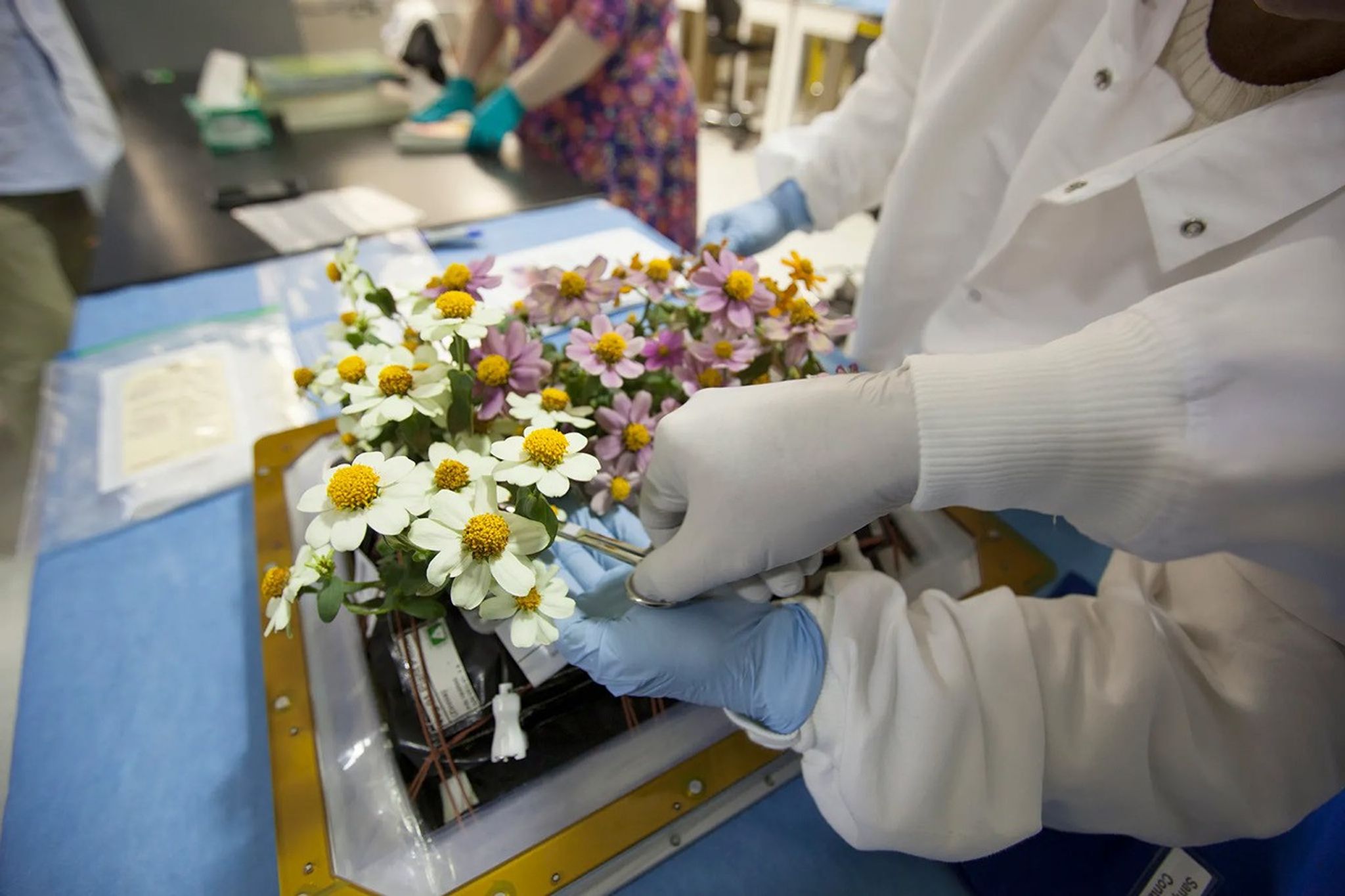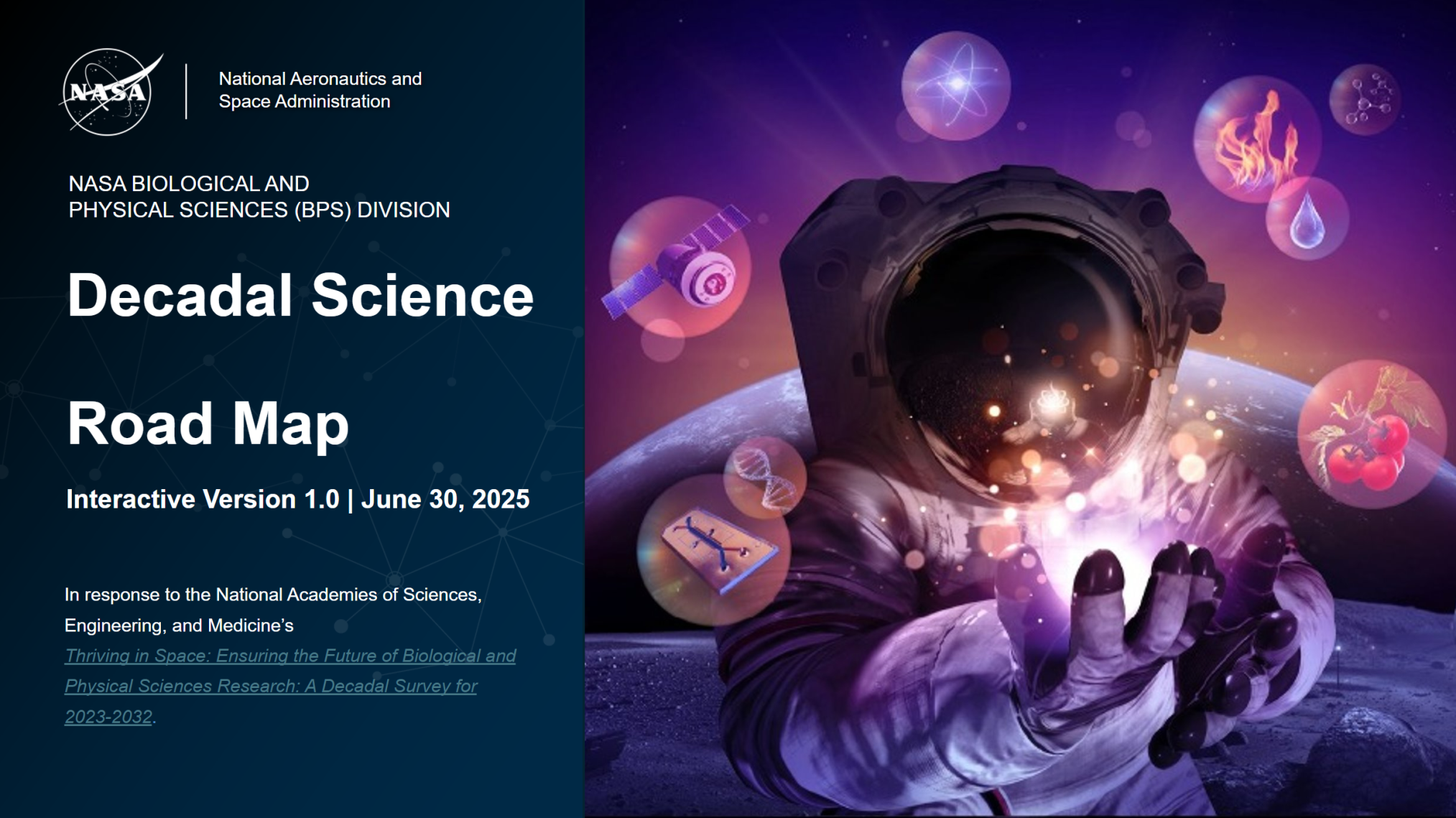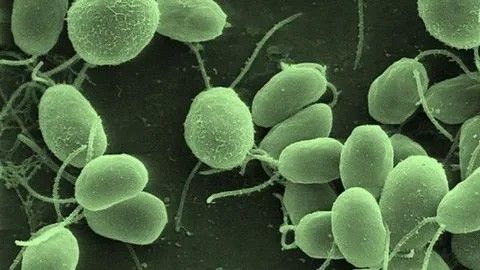BIOLOGICAL & PHYSICAL SCIENCES
Boldly growing where no one has grown before
To go farther and stay longer in space, crew will need sustainable sources of food. Crops can provide fresh food, benefit astronaut mental well-being, and improve space habitats.
Impacts & Benefits
-
Space Crops
Studying how plants adapt to harsh conditions in space can lead to agricultural innovations that support deep-space exploration and improve farming in austere environments on our home planet.
-
ADVANCING MOON AND MARS MISSIONS:
• Lunar Effects on Agricultural Flora (LEAF) – planned Artemis III experiment on the Lunar surface
• Plant research aboard the International Space Station, including Veggie and Advanced Plant EXperiment-12 (APEX-12) -
ENABLING SPACE EXPLORATION:
• Provide astronauts with fresh and nutritious food
• Enable bioregenerative life support systems
• Support astronauts’ overall psychological well-being -
BENEFITTING HUMANITY:
• Improve the growth and nutritional value of crops
• Contribute to innovations in farming and agriculture

Biological & Physical Sciences
APEX-12 (Advanced Plant EXperiment-12)
Advanced Plant EXperiment-12 (APEX-12) will test the hypothesis that induction of telomerase, a protein complex, activity in space protects plant DNA molecules from damage elicited by cellular stress evoked by the combined spaceflight stressors experienced by seedlings grown aboard the space station.
Learn More about APEX-12 (Advanced Plant EXperiment-12)Strategic Focus Areas
Plants will play a crucial role in human exploration beyond Earth, assisting in the production of oxygen, food, fiber, and fuel. Each space environment presents unique challenges to growing plants, including differing gravities, atmospheres, and access to resources. Space Crops research will inform the science and technology that harness the power of plants to enhance the quality of life for humans in space.
Growth Medium
Since space lacks fertile soil, scientists must develop and utilize innovative methods for growing crops in extreme environments. NASA research will lead to advancements in technologies for new plant growth media, including soilless cultivation methods such as hydroponics and aeroponics. Researchers will also explore ways to make regolith found on other planets more amenable as a growth medium or source of fertilizer.
Crop Cultivars
Astronauts will require nutrient-dense sources of food that can withstand the harsh conditions of space environments. NASA science will focus on selecting and cultivating crop varieties best suited for deep-space journeys. This research could lead to sustainable, nourishing provisions for crew as they go farther and stay longer in space.
Space Farming
Establishing sustainable space crop production systems to support exploration can be challenging because of the lack of mature technologies to monitor plant health and manage water, fertilizer, and light inputs. NASA research will focus on developing space horticultural methods and technologies to support plant growth, while controlling crop disease outbreaks and ensuring that produce is safe for human consumption.
Bioregenerative Life Support Systems
Sustainable bioregenerative life-support systems that produce fresh food and water, revitalize air, and recycle waste are essential for deep-space exploration. NASA research focuses on understanding how the biological components of crop production systems could best be integrated into the physical architecture of ecosystems in space. Insights could contribute to innovations in reusing and recycling resources in self-sustaining life support systems.
Investigations
-
01
ARTEMOSS (Antarctic Isolate 1 (ANT1) Radiation Tolerance Experiment with Moss in Orbit on the Space Station)
ARTEMOSS will study how Antarctic moss recovers from any potential damage from ionizing radiation exposure when plants remain on the ground and when plants grow in spaceflight microgravity.
-
02
C4 Photosynthesis in Space Advanced Plant Experiment-9 (APEX-9)
Results could show how photosynthesis and overall plant metabolism change in space. This knowledge could support development of ways to use carbon metabolizing plants in bioregenerative life support systems on future missions.
-
03
VEG-03 MNO
Growing plants provides nutrition for astronauts, as well as psychological benefits that help maintain crew morale during missions. During VEG-03 MNO, astronauts will be able to choose what they want to grow from a seed library including Wasabi mustard greens, Red Russian Kale, and Dragoon lettuce.
-
04
ADDITIONAL
Biological & Physical Sciences.
Our Goals At-A-Glance.
BPS Scientific Goals Overview
Revolutionary Research in Extraordinary Places.
NASA research contributes to breakthroughs that advance national priorities and maintain U.S. leadership in science and technology.
Studying the fundamental effects of space stressors (such as radiation and microgravity) on biological and physical phenomena promotes mission success and benefits life on Earth.
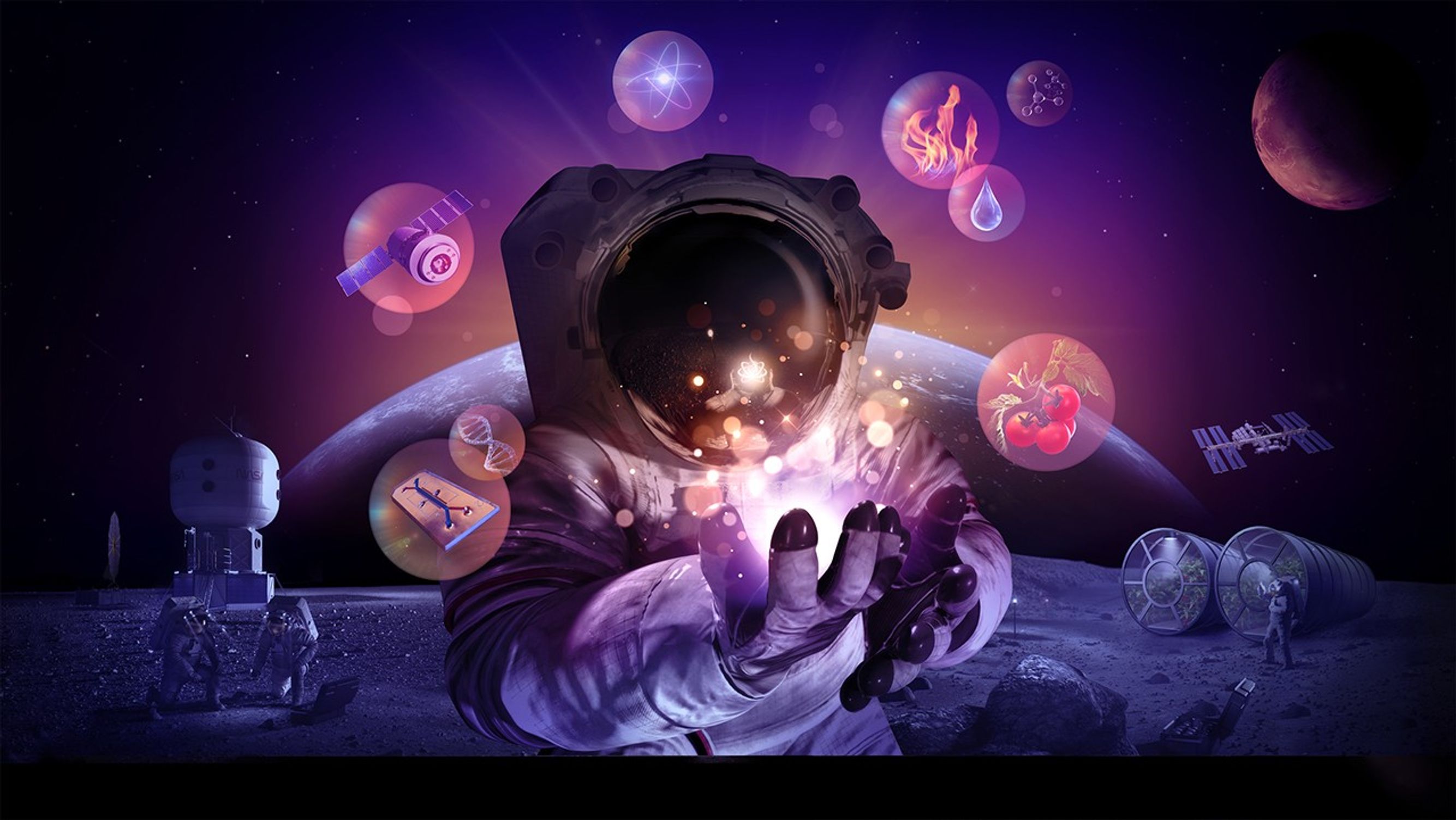
Precision Health
Leveraging space to unlock the secrets of aging and disease
Stressors encountered during space travel can affect human health, including bone and muscle loss, immune system function, microbes, and other biological responses. NASA research could provide vital information needed to help protect astronauts during future deep-space missions and advance the prevention and treatment of disease for people on Earth.
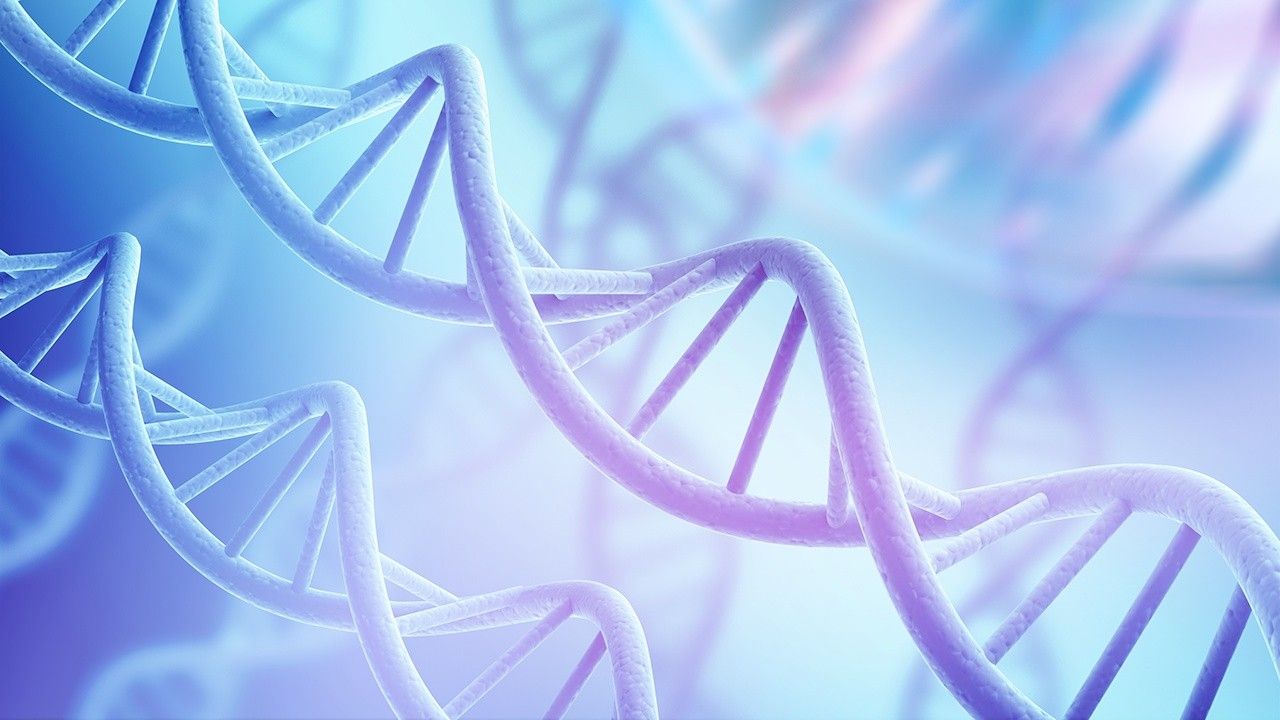
Quantum Leaps
Unraveling mysteries of the universe
While modern physics has led to numerous scientific breakthroughs, many aspects of quantum phenomena remain unexplained. NASA’s research conducted in space offers unique opportunities to advance quantum science in ways that Earth-based studies cannot. Technologies like smartphones, computers, GPS, and medical imaging all stem from quantum research. Continued exploration in this field could contribute to innovations beyond our most imaginative theories.
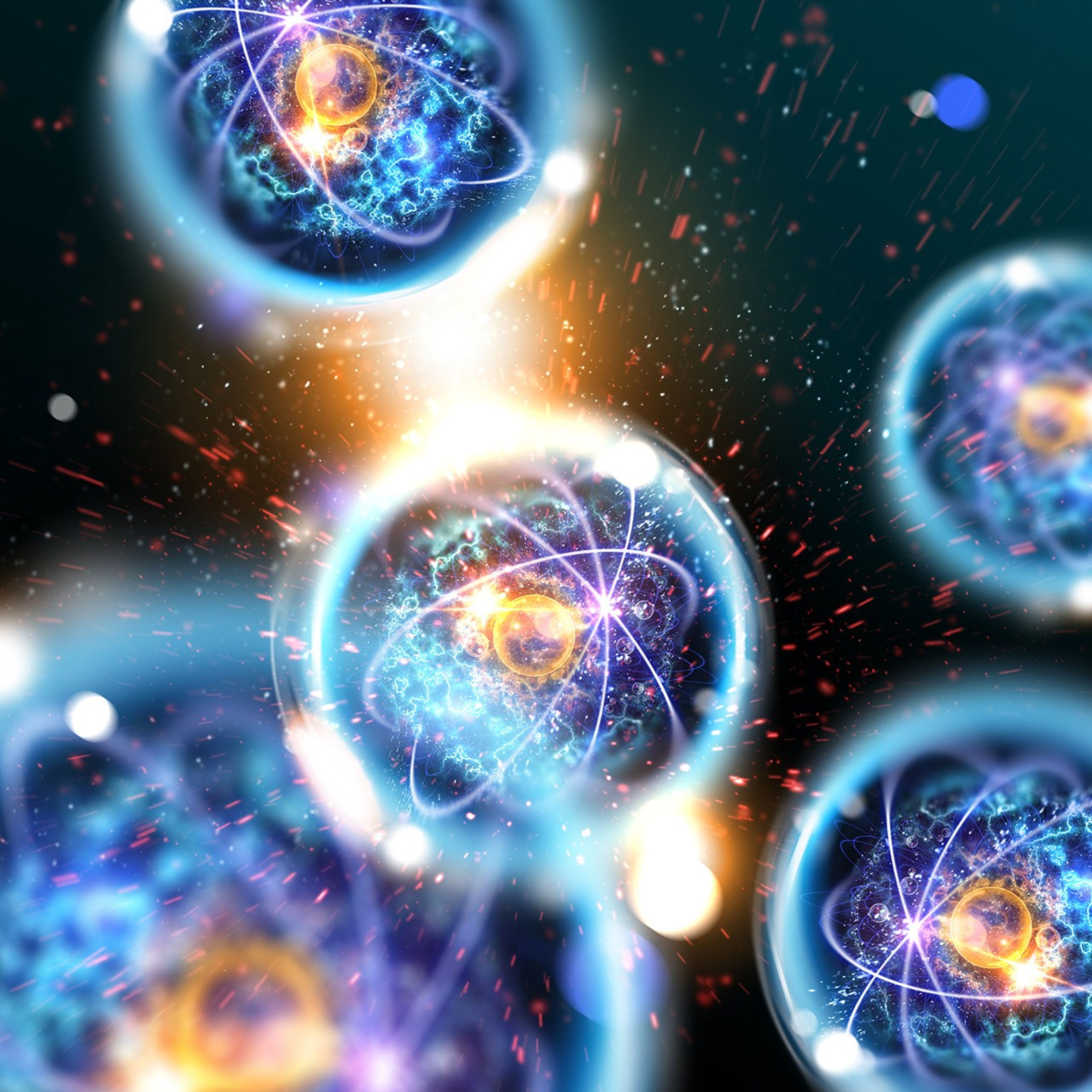
Foundations
Revealing the novel behaviors of fluids, fire, and materials in space
Physical phenomena behave differently in space: how flames burn, fluids flow, and materials react to extreme conditions. Research in these areas can lead to scientific breakthroughs and new technologies that enable safe, sustained missions to the Moon, Mars, and beyond. It can also contribute to everyday life, including improvements in fire safety, manufacturing, commercial products, and more.
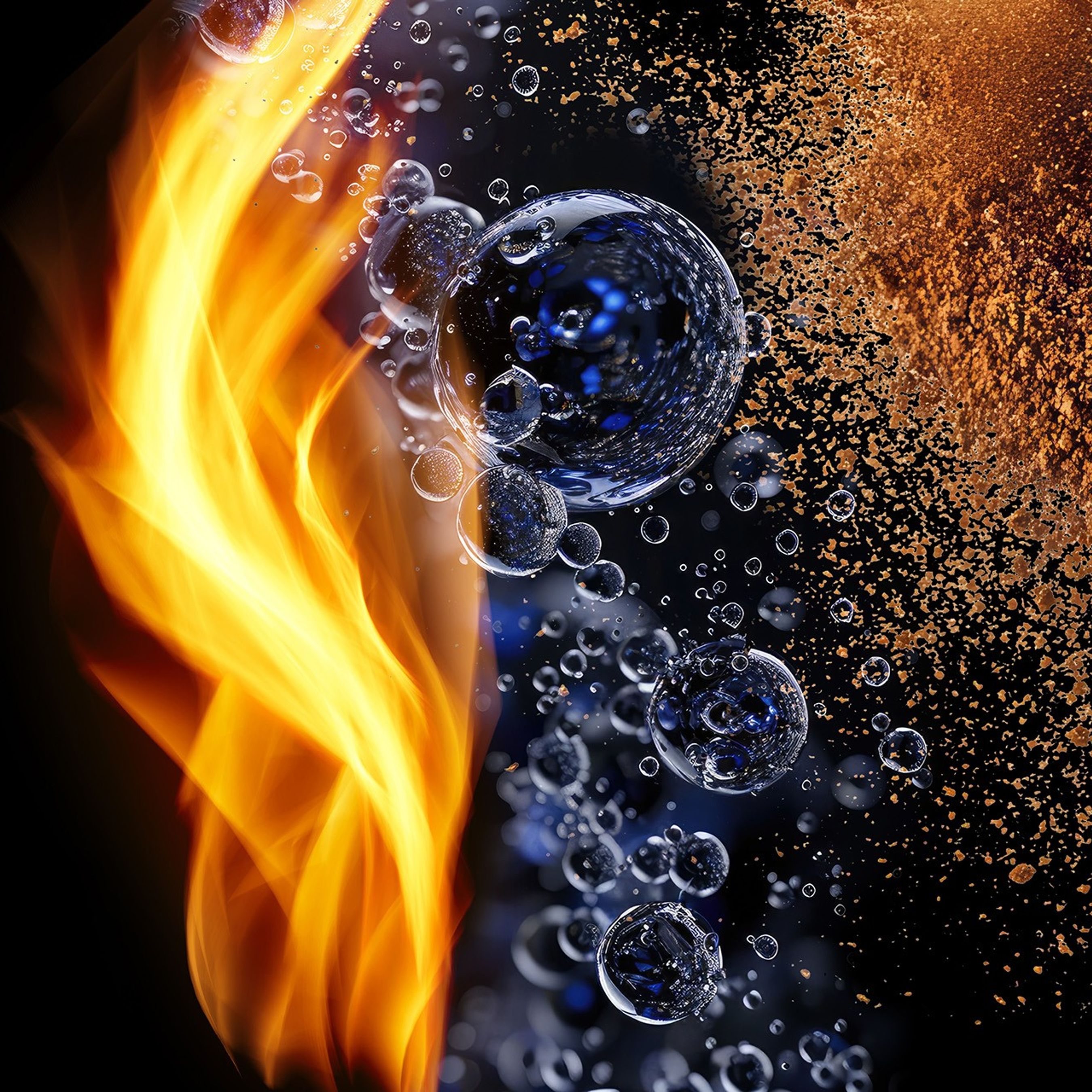
Space Labs
Advancing research in space, on any platform, anywhere
Conducting experiments in space reveals phenomena impossible to observe on Earth. Space Labs enable the use research capabilities across a spectrum of spaceflight environments — suborbital, low Earth orbit, Moon, Mars, and distant destinations — to push the boundaries of scientific knowledge.
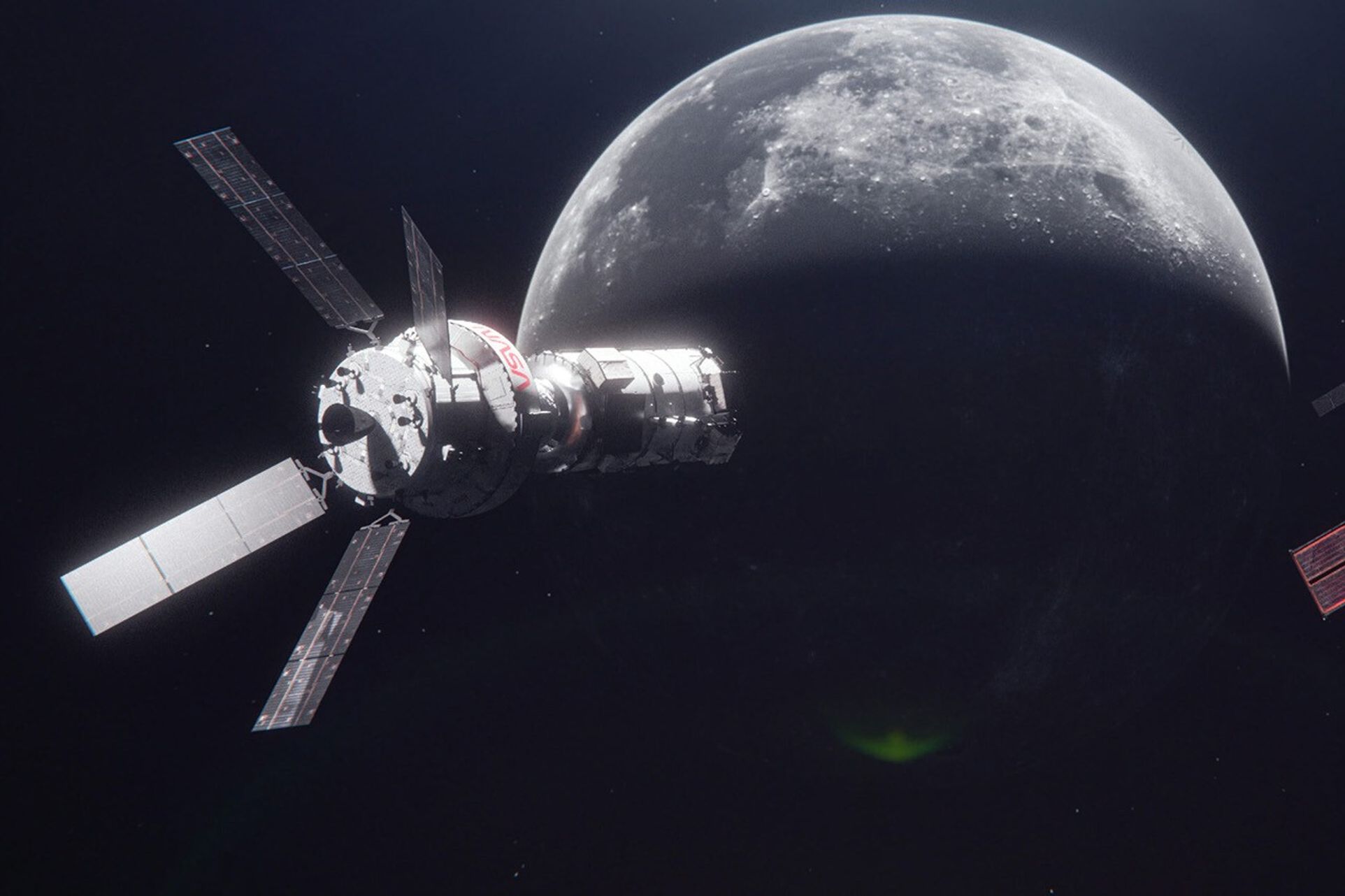
Biological & Physical Sciences Division
-
NASA’s Biological and Physical Sciences Division pioneers scientific discovery and enables exploration by using space environments to conduct investigations not possible on Earth. Studying biological and physical phenomena under extreme conditions allows researchers to advance the fundamental scientific knowledge required to go farther and stay longer in space, while also benefitting life on Earth.



























